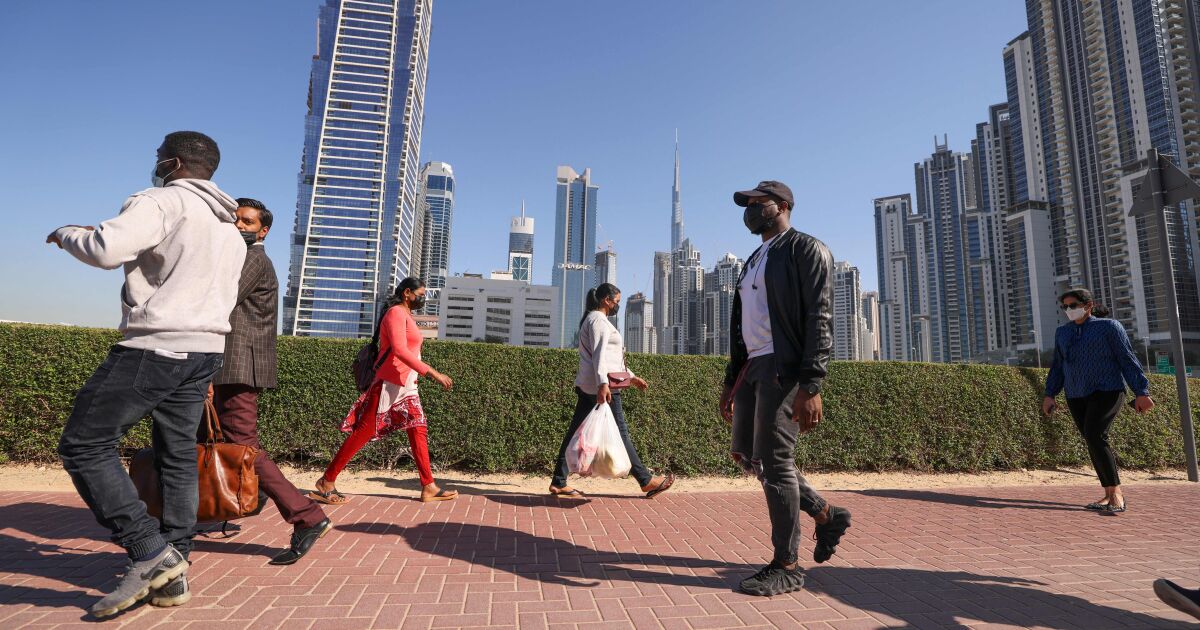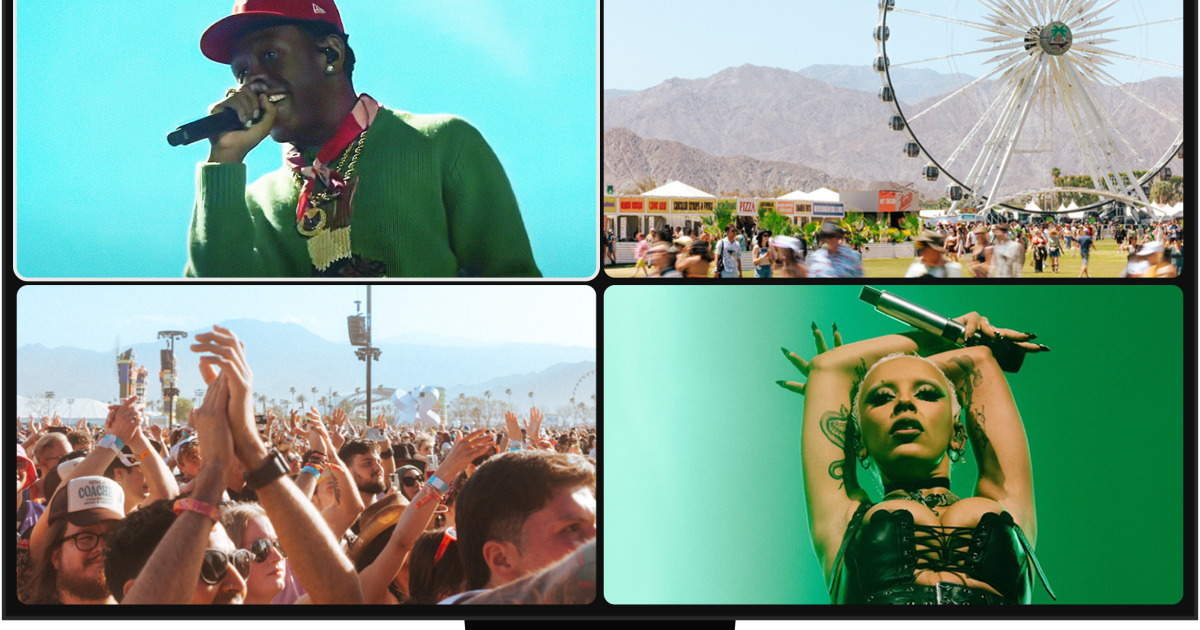Business
Opinion: Can a four-day workweek really work? Many companies have already learned the answer

In 1940, Congress amended the Fair Labor Standards Act to limit the standard workweek to 40 hours, with any additional hours eligible for overtime. Despite a more than threefold increase in productivity since, the 40-hour week has remained unchanged for 83 years.
But it may be changing at last. 2023 could just be the year of the four-day, 32-hour week.
Over the first few months of the year, Google searches for information about the four-day week rose by a factor of five. The media have produced hundreds of stories on companies that are offering 32-hour schedules. California and other states have considered legislation to enact or study a four-day week, and Riverside Rep. Mark Takano has introduced a bill on the subject in Congress.
In Europe, national and regional governments have pilot four-day week programs in progress, and the United Arab Emirates has shifted public-sector employees to a 4 ½-day schedule. In February, we released findings from the world’s largest trial of a four-day week with no reduction in pay, involving some 60 organizations in Britain across a range of sectors from public relations to healthcare to manufacturing. The results were striking: Employees and companies using the new schedule are thriving.
Why are reduced working hours suddenly on the agenda after years of not being taken seriously? The most important reason is the pandemic.
Leaders of the first organization to be part of our research attributed their decision to the COVID-driven shift to remote work. Dr. Adam Husney, the chief executive of the health information firm Healthwise, explained: “Once we realized we could trust our employees with where they work, we also realized we could trust them about how much time they work.”
Before the pandemic, there was a lot of talk about paying people for their output rather than their hours, but organizations honored the principle mostly in the breach. Once people are off-site, however, paying for productivity rather than time makes more sense, as least for employees who aren’t subject to draconian surveillance measures.
The pandemic also turbo-charged the four-day week by creating much more hardship for workers. While the work-life interface was difficult to navigate before COVID, the contagion itself and the complications of merging work and family life led to record levels of stress. The latest published research from Future Forum, based on a 2022 survey, found that 42% of employees polled in the United States and five other countries said they were burned out, a 4-percentage-point increase compared with just a year earlier.
Workers are responding with their feet. For Healthwise’s Husney, a staff exodus in June 2021 was the impetus for closing on Fridays. The labor market is experiencing not only the so-called Great Resignation — record numbers of people quitting their jobs — but also extremely high numbers of unfilled positions. Organizations are having difficulty retaining workers and scrambling to fill openings.
Raising pay isn’t always enough, and not all organizations can afford to do so. Turnover is also extremely expensive. It’s one reason much of the interest in the four-day workweek is coming from healthcare organizations, where burnout and resignations among nurses have become endemic.
We also think a quieter evolution away from the five-day schedule is underway. Many organizations have already reduced summer schedules by shortening or eliminating Friday hours. No-meeting Fridays have enabled more remote workers to take some of the day for themselves under the radar. We discovered that Friday morning classes at an exercise studio in our area have become very popular, thanks partly to people who reported being “at work.”
Our research suggests that the four-day, 32-hour week is not only feasible; it’s better for workers and employers.
In collaboration with the nonprofit 4 Day Week Global, we’ve been tracking what happens when companies switch to the curtailed schedule with no reduction in pay after a two-month process of figuring out how to maintain productivity and performance. We’ve found that employee well-being is markedly improved. Of more than 100 companies with thousands of workers around the world, nearly 70% experienced reduced rates of burnout.
Stress fell. Reported physical and mental health improved. People felt less anxious and fatigued, exercised more and slept better. Their life satisfaction rose, and conflicts among work, family and life plummeted.
But it’s not just workers who benefited. On a 10-point scale, companies rated the success of the trials at a robust 8.5 or higher. Perhaps the most persuasive metric is that most are opting to continue with the shorter schedule. Only a handful of the organizations that have participated in the trials have reverted to the five-day week.
Many will continue to oppose a shortened work schedule because it sounds un-American or unprofitable. But we’re finding out that modern challenges make the four-day workweek not only possible but better for workers, employers and society.
Juliet Schor is a professor of sociology and Wen Fan is an associate professor of sociology at Boston College.

Business
Sony warns tech companies: Don't use our music to train your AI

Sony Music Group is sending letters to 700 artificial intelligence developers and music streaming services warning them to not use its artists’ music to train generative AI tools without its permission.
The company — one of the three largest recorded music firms — said it is explicitly opting out of the use of its music for training or developing AI models through text or data mining or web scraping as it relates to lyrics, audio recordings, artwork, musical compositions and images. Sony Music Group artists include Celine Dion, Doja Cat and Harry Styles.
“We support artists and songwriters taking the lead in embracing new technologies in support of their art,” Sony Music Group said in a statement on its website Thursday. “Evolutions in technology have frequently shifted the course of creative industries. … However, that innovation must ensure that songwriters’ and recording artists’ rights, including copyrights, are respected.”
The letters were sent to companies including San Francisco-based ChatGPT creator OpenAI and Mountain View-based search giant Google, according to a person familiar with the matter who was not authorized to speak publicly. OpenAI and Google did not immediately respond to requests for comment.
The move comes as the entertainment industry is grappling with rapid innovations in artificial intelligence technology. Writers and actors raised concerns last summer about whether leaving AI unchecked could threaten their livelihoods. Meanwhile, some creatives have marveled at the advancements that could allow them to pursue bold ideas with tight budgets.
This year, OpenAI unveiled its text-to-video tool Sora, which was used to create a four-minute music video for music artist Washed Out. The director of the video told The Times that Sora helped him depict multiple locations and visual effects that he otherwise couldn’t have.
But AI can also create chaos. Celebrities have dealt with “deep fakes” — false videos or audio depicting a celebrity endorsing certain brands or activities. To help protect their clients against unauthorized use of their voice and likeness, Century City-based Creative Artists Agency is helping talent create their own digital doubles.
On Thursday, two New York voice-over actors sued Berkeley-based AI voice generator business Lovo for unauthorized use of their voices. Lovo did not immediately return a request for comment. The lawsuit was filed in U.S. District Court for the Southern District of New York.
Some people in the entertainment industry have said they would like the AI companies to be more transparent about how they are training their tools and whether they have the appropriate copyright permissions.
OpenAI has said its large language models, including those that power ChatGPT, are developed through information available publicly on the internet, material acquired through licenses with third parties and information its users and “human trainers” provide.
The company said in a blog post that it believes training AI models on publicly available materials on the internet is “fair use.”
But some media outlets, including the New York Times, have sued OpenAI. The newspaper raised alarms about how its stories are being used by the tech company.
In Sony Music Group’s letters to AI businesses, the company said it has reason to believe its content may have been used to train, develop or commercialize artificial intelligence systems without its permission, according to a copy obtained by the Times. Sony Music Group asked the tech companies to provide information regarding that use and why it was necessary.
Sony Music Group, owned by Tokyo-based electronics giant Sony Corp., also wants music streaming providers to add language in its terms of service saying that third parties are not allowed to mine and train using Sony Music Group content, the person familiar with the matter said.
Business
A woman was dragged by a self-driving Cruise taxi in San Francisco. The company is paying her millions

General Motors’ autonomous car company, Cruise, has reportedly agreed to pay an $8-million to $12-million settlement to a woman who was hospitalized after getting dragged along the pavement by a self-driving taxi in San Francisco last year.
The woman, a pedestrian, was struck by a hit-and-run vehicle at 5th and Market streets and thrown into the path of Cruise’s self-driving car, which pinned her underneath, according to Cruise and authorities. The car dragged her about 20 feet as it tried to pull out of the roadway before coming to a stop.
She sustained “multiple traumatic injuries” and was treated at the scene before being hospitalized.
It’s unclear when the settlement was reached or the exact amount, sources familiar with the situation told Fortune and Bloomberg. The condition of the woman, whose name was not released by authorities, is unknown, but a representative of Zuckerberg San Francisco General Hospital told Fortune that she had been discharged.
Cruise initially said that its self-driving car “braked aggressively to minimize impact” but later said the vehicle’s software made a mistake in registering where it hit the woman. The car tried to pull over but continued driving 7 mph for 20 feet with the woman still under the vehicle.
“The hearts of all Cruise employees continue to be with the pedestrian, and we hope for her continued recovery,” Cruise said in a statement.
Cruise halted its driverless operations after its autonomous taxi license was suspended by California’s Department of Motor Vehicles. The company was also accused of lying to investigators and withholding footage of the car crash.
Cruise said this week that it would start testing robotaxis in Arizona with a “safety driver” behind the wheel in case a human needs to take control of the vehicle, according to a company news release.
“Safety is the defining principle for everything we do and continues to guide our progress towards resuming driverless operations,” according to the release.
Business
How YouTube became must-see TV: Shorts, sports and Coachella livestreams

When YouTube launched nearly two decades ago, its first clip was a grainy video of co-founder Jawed Karim speaking to the camera while standing in front of the elephants at the San Diego Zoo.
Not exactly must-see TV.
Since, then the online video giant has increasingly been the entertainment of choice for billions of people. And while the Google-owned service is still often thought of as being the destination for people watching funny short videos on their smartphones, the way that Americans watch it has changed in a big way.
People are increasingly choosing to watch YouTube on their connected TVs rather than on laptops and mobile devices, treating it more and more like a regular television destination.
The San Bruno, Calif.-based video giant said more than 150 million people in the U.S. are watching YouTube on connected TV screens every month, citing December 2022 data. That’s up 11% from 2021. YouTube is consistently the most watched streaming service in the U.S. on a TV in the U.S. every month, even beating Netflix and Amazon’s Prime Video since February 2023, according to Nielsen. The service accounts for nearly 10% of television viewing, the data firm said.
According to research firm Emarketer, U.S. adults spend 36 minutes each day watching YouTube, with 17 of those minutes on a connected TV, four minutes on a desktop or laptop computer and 15 minutes on a mobile device.
A variety of content is driving the company’s evolution. YouTube said TVs accounted for more than 50% of the watch time for its Coachella livestream this year, which is higher than ever before. Views of Shorts, clips that are 60 seconds or less, on connected TVs more than doubled last year, YouTube said.
“We’ve invested in making sure that YouTube really captures the totality of the experience that people want,” said Christian Oestlien, YouTube’s vice president of product management for connected TV. “What we hear from our users is they want to be able to watch their favorite creators but also highlights from their favorite sporting events, listen to their favorite artist and watch their favorite podcast and do it all in this one contained experience.”
At a time when consumers are choosing between multiple streaming services, YouTube has an advantage of having a wide variety of options, from live sports to user-generated videos. The company said the increase in TV watch time comes as connected TVs are becoming more widely available.
TV screen time can be helpful to streamers wishing to court more advertising dollars. This week, television networks and streaming services Amazon and Netflix made gala presentations to advertisers, showing off the programming they have coming up.
YouTube on Wednesday presented to advertisers new features such as branded QR codes and non-skippable assets on connected TVs.
“YouTube is wanting to position themselves not just as a digital advertising option, they want advertisers to see them on the same advertising footing as any other streaming service,” said Brett Sappington, founder of Dallas-based media and insights firm Sappington Media.
YouTube has introduced features to improve the television viewing experience, including the option to watch Coachella performances through a four-way split screen. The company also has shopping options.
“This isn’t my dad’s TV or my grandma’s TV,” Oestlien said. “This is TV rethought for a new generation.”
YouTube video creators have also embraced TV viewing, Oestlien said. In the last three years, the number of top YouTube creators who receive most of their watch time from TV screens has quintupled, YouTube said.
YouTube has also gotten a boost from its deal to become the home of pro football’s “NFL Sunday Ticket” game package. Fans will watch live games on YouTube on Sunday, then come back and watch clips through its video library or commentary from its creators, Oestlien said.
“It really becomes this surround-sound experience where, as a football fan, you can come to YouTube any day of the week,” he said.
YouTube and other streaming services have been competing for sports league rights in order to increase viewership. Amazon has the NFL’s “Thursday Night Football” games and has bid for a package of NBA matches. On Wednesday, Netflix announced it had secured two Christmas NFL games for 2024.
-

 Politics1 week ago
Politics1 week agoBiden takes role as bystander on border and campus protests, surrenders the bully pulpit
-

 Politics1 week ago
Politics1 week ago'You need to stop': Gov. Noem lashes out during heated interview over book anecdote about killing dog
-

 Politics1 week ago
Politics1 week agoRFK Jr said a worm ate part of his brain and died in his head
-

 News1 week ago
News1 week agoMan, 75, confesses to killing wife in hospital because he couldn’t afford her care, court documents say
-

 World1 week ago
World1 week agoPentagon chief confirms US pause on weapons shipment to Israel
-

 Politics1 week ago
Politics1 week agoHere's what GOP rebels want from Johnson amid threats to oust him from speakership
-

 World1 week ago
World1 week agoPro-Palestine protests: How some universities reached deals with students
-

 World1 week ago
World1 week agoConvicted MEP's expense claims must be published: EU court














